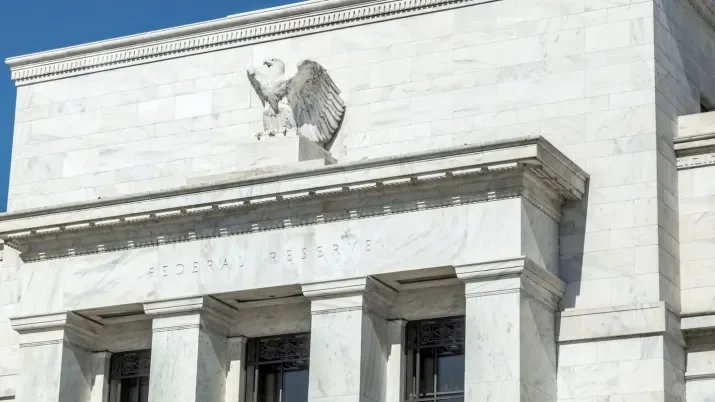Thames Water - Green is not always clean
Thames Water, the private utilities company that supplies most of Greater London and much of the south of England, has been in the headlines for all the wrong reasons in the past week. Following continual operational underperformance, with gearing of 80% debt/RAV (regulatory asset value), the highest in the UK water sector, and a ballooning interest bill due to 60% of debt being inflation linked, Thames Water is now rumoured to be being considered for nationalisation by the UK government.
While nationalisation headlines may come as a surprise, an adverse outcome for investors should not be unexpected given the long list of operational issues that have been festering at Thames for many years.
At the bondholder level, the majority of debt, £14.5 billion out of the £16 billion outstanding, sits within their ringfenced WBS (whole business securitisation) whereby bonds are contractually secured by all of Thames Water’s operating assets - which have a RAV (regulated asset value) of £17.9 billion . Given that the asset value is greater than the nominal value of debt within the WBS, we think talk of potential write-down or default for bondholders is unwarranted and is not market consensus. However, it is unclear how the £1.5 billion holdco (Kemble) class Bs would be treated in a nationalisation scenario. Within this part of the structure, there is a £400 million bond rated single B, reflecting its higher risk profile; this bond sits outside the WBS and does not benefit from contractual security through the ringfenced assets and instead relies on dividend payments to cover interest expenses.
While the principal value of Thames Water bonds may remain intact, we suspect investors in the four green bonds totalling €2.8 billion issued since 2022, which found their way into more than 200 ESG funds according to data from Morningstar Direct, will now be reconsidering their view of Thames' green bonds and the credentials of the green bond sector more broadly. The use of proceeds for these bonds was earmarked for "Water and wastewater treatment works, Water and wastewater treatment networks, and Renewable energy". However, given the environmental performance of the business, in our view investors will feel rightfully deceived and potentially even victims of greenwashing.
For many years Thames Water has been plagued with environmental problems. Looking at Ofwat (the UK regulator)’s 2021-22 performance report, Thames Water has the lowest customer satisfaction level across the sector, they have the most frequent sewer incidents, they have the highest number of repairs per 1,000km of mainline and they have the highest number of customer complaints per 10,000 properties. In addition, Thames has had its highest water pipeline leakage rate in 5 years, while stories about reckless dumping of sewage polluting rivers and seas only continue to increase; just this week, Thames were fined £3.3 million after it discharged millions of litres of undiluted sewage into two rivers, killing more than 1,400 fish. Combining all of these red flags, we think it is near impossible to look at Thames Water positively through an environmental lens, let alone justify issuing under the green label.
When it comes to green bonds, we have expressed our views on the asset class publicly many times; recently, we covered the topic in a webinar and have previously written a whitepaper highlighting many of these issues in the early days of the asset class. Our firm belief is that green bonds cannot be evaluated in isolation. Despite their use of proceeds being earmarked for specific projects or assets, we think they remain susceptible to governance and management actions, similar to conventional bonds. Therefore, in our view it is crucial to assess the overall ESG profile of the company as a whole. ESG factors are interconnected in most circumstances, and persistent environmental issues are ultimately likely to be the result of poor governance, which will lead to negative social impact. Merely labelling a bond as "green" does not absolve investors from considering the broader aspects of a company's operations and warrant automatic inclusion in sustainable funds. Equally, we think holding a green bond in a company that continues to have a negative impact on the environment and society is not justifiable within a sustainable fund. Thames Water's case serves as a vivid reminder of this, highlighting the need to evaluate comprehensive ESG credentials and emphasising the benefits of active management in ESG investing.
The well of issues at Thames are deeper than poor operational and environmental performance however.
Thames Water was purchased by a consortium headed up by Australia’s Macquarie Group in 2006, during which period the private equity owner were accused of ramping up debt levels while siphoning off dividends. In its first year of ownership, Thames paid £656 million in dividends while profits were only £241 million , a pattern that would persist throughout. Over Macquarie's 11 years of ownership, £2.7 billion was taken out in dividends, and debt levels increased from £3.4 billion to £10.8 billion , while the pension deficit increased from £18 million to £380 million . The current owners, largely institutional investors, appear to have inherited a business plagued with operational challenges following years of underinvestment. This situation highlights the governance challenges that often accompany companies with private equity ownership. Unfortunately, the new owners do not seem to have taken significant steps to address the company's direction, allowing operational issues to persist and failing to make necessary investments. These early governance concerns from previous and recent investors alike were good leading indicators for the environmental issues the business currently faces, which have now turned into a public and political problem.
Addressing the flaws highlighted will require substantial investment, posing challenges for both equity and bond holders. To fund the necessary investment, water bills will need to increase during the next regulatory review in 2025, where regulators face the delicate task of striking a balance between consumer welfare and allowing a prudent level of returns generous enough to attract sufficient capital to fund the necessary investment plans —a politically sensitive endeavour.
Recent statements from the Ofwat CEO indicate that nationalisation is not an immediate concern but while initial panic may have been overstated, Thames Water's reputation look to be lying in ruins and we expect the senior management, as well as the regulator, will be under ongoing political scrutiny in the coming days and weeks ahead. All the while the bond market will understandably demand higher credit spreads to account for the lingering risks and uncertainties, including ESG concerns, potential ratings downgrades, and the possibility of emergency government intervention. While the ringfenced WBS provides significant protection for bondholders, the rumoured involvement of the government introduces an unpredictable element.



